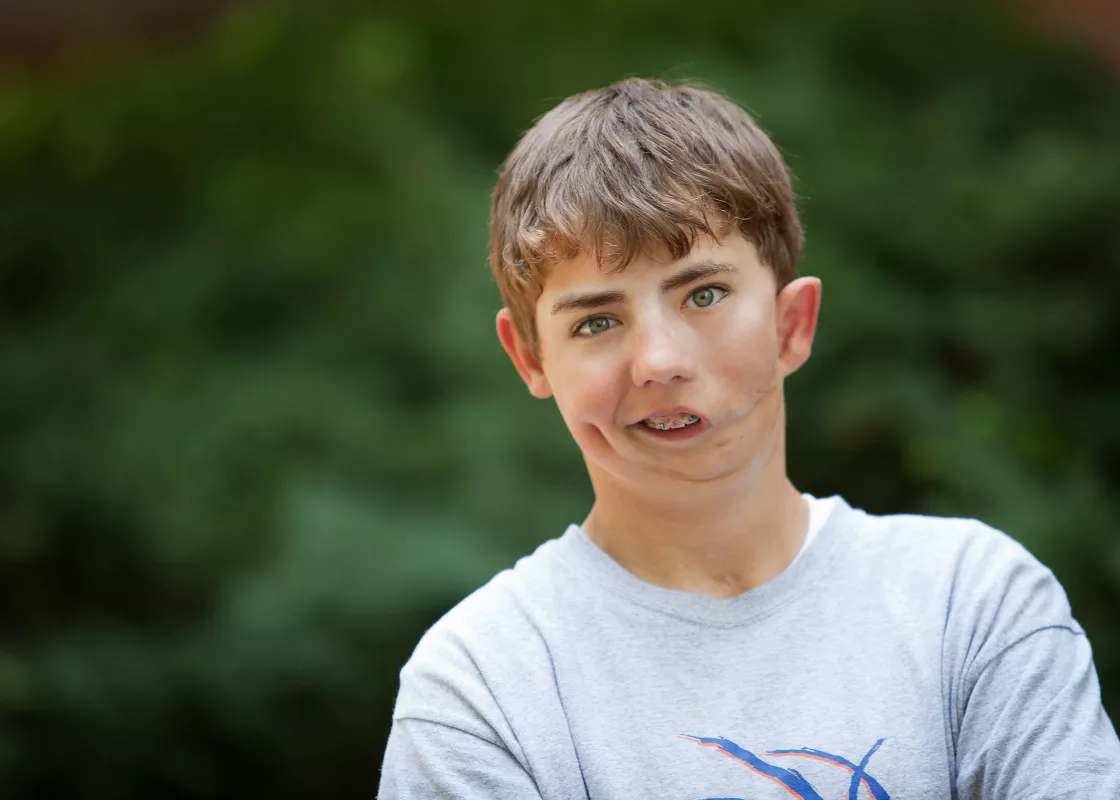Chaz Renken

John Renken doesn’t have to think long when asked about his son, Chaz.
“He’s my hero, in a lot of different ways,” he says. “He’s a great kid.”
As a teenager, Chaz does what most of his friends do: he plays almost every sport at Sioux Center High School and is learning to drive. He helps keep watch over his five younger siblings and serves as mentor to next-younger brother Caleb.
When he was born, his parents weren’t sure any of this would be possible, or even if their son would survive to experience childhood.
Chaz was born with his umbilical cord wrapped around part of his head. When doctors removed the cord, they discovered he had a facial cleft that split the left side of his face, leaving an opening where his cheek should have been. When his parents, John and Candy Renken first saw their son, they feared the worst.
“My first thought was, ‘Is he going to live?’” John says.
“I was worried about his brain,” Candy adds.
“We had no idea there was anything wrong or any reason to expect complications,” she says. “Our ultrasound showed no negative results.”
The Renkens were referred to University of Iowa Stead Family Children’s Hospital when Chaz was 10 days old. They immediately met with their son’s new medical team.
“There was an entire team dedicated to Chaz. We were no longer working one-on-one,” Candy recalls.
Right away, doctors were able to answer questions about Chaz’s future: whether he’d be able to eat, play and live a normal life.
“As new parents, we just wanted the doctors to be able to fix him,” Candy says. “It was a relief to know that he was going to be OK.”
Chaz’s first surgery came when he was six months old: surgeons closed the opening in his cheek. A few months later, Chaz participated in a sleep study because he wasn’t sleeping well. Doctors discovered he wasn’t getting enough oxygen when sleeping, so a tracheostomy was inserted to help him breathe. Additional surgeries included the use of a clamp on his cheek to stretch the bone, and grafting his rib bone to create a mandible for his jaw—all before he entered preschool.
As he grows, he continues to have surgeries to repair the cleft leading to final reconstructive repair.
Chaz doesn’t consider himself different from his friends and they don’t treat him differently than anyone else.
That, Candy says, is what she wanted all along for her son. “We don’t see a disability, only his countless abilities. He’s been given extra challenges in life, but has the added strength, courage, and character to overcome them successfully.”
“How do you put into words the appropriate ‘thank you’ to the doctors who did all this?” she says. “We can say ‘thank you’ a million times but it still doesn’t seem enough.”